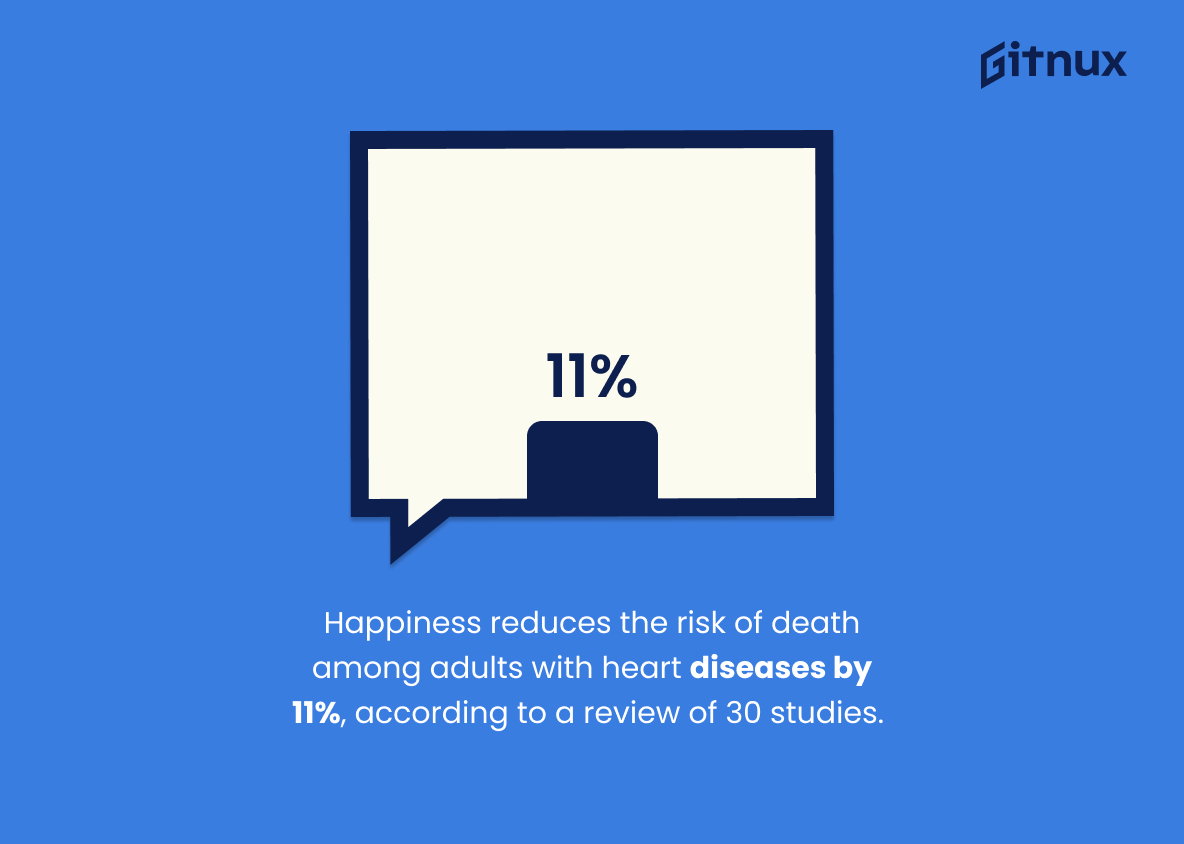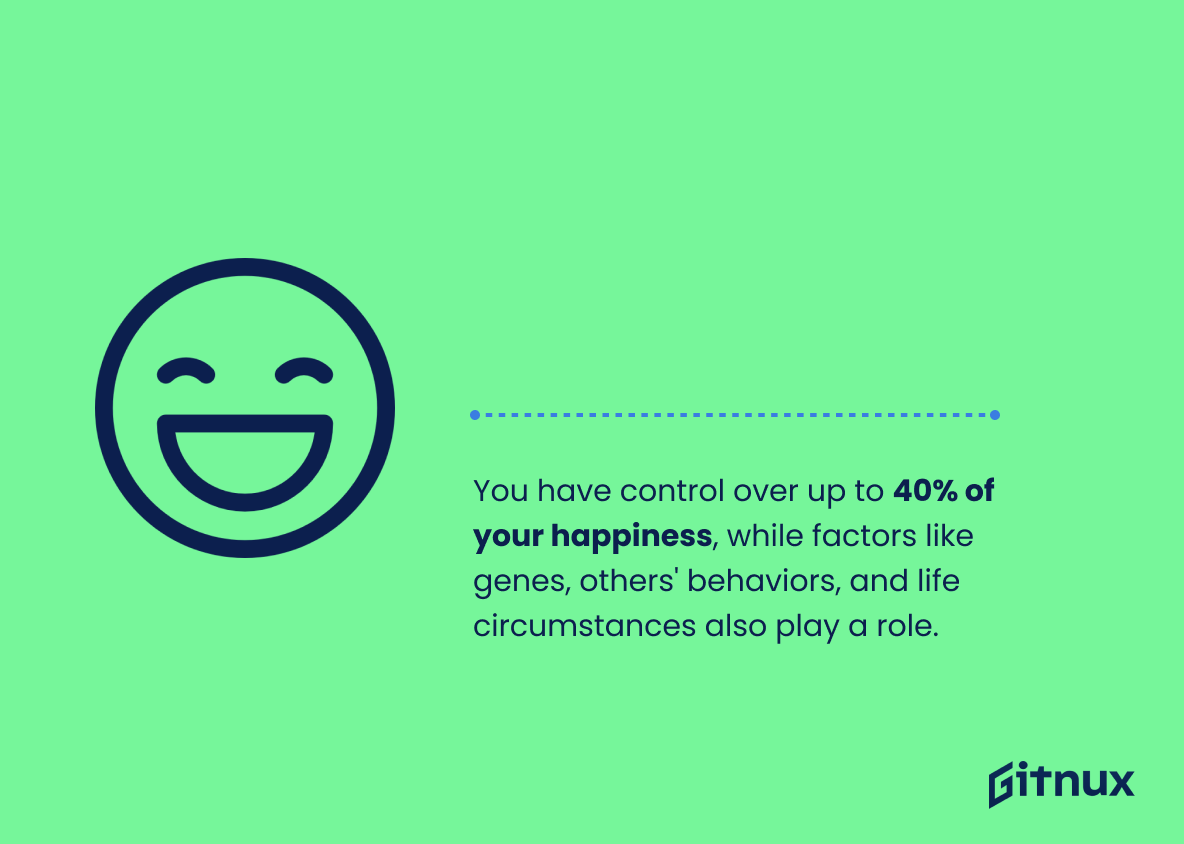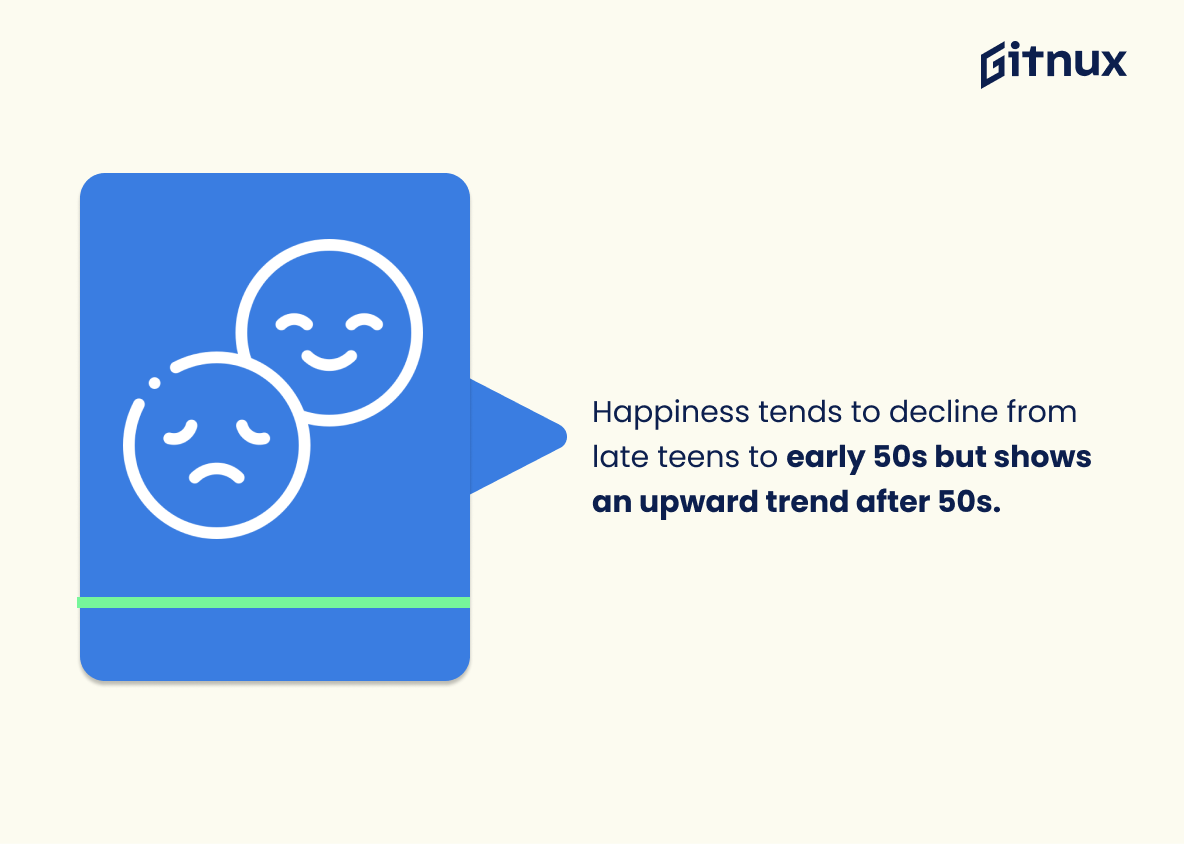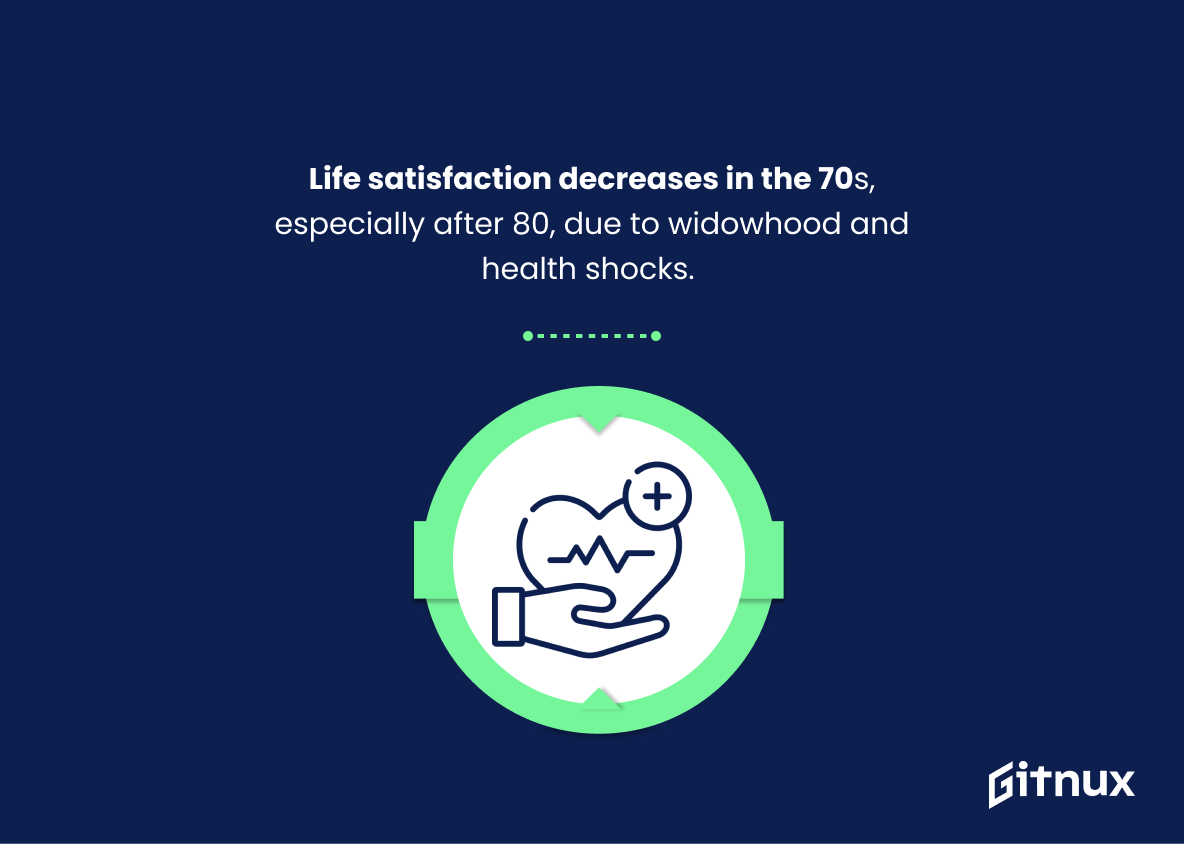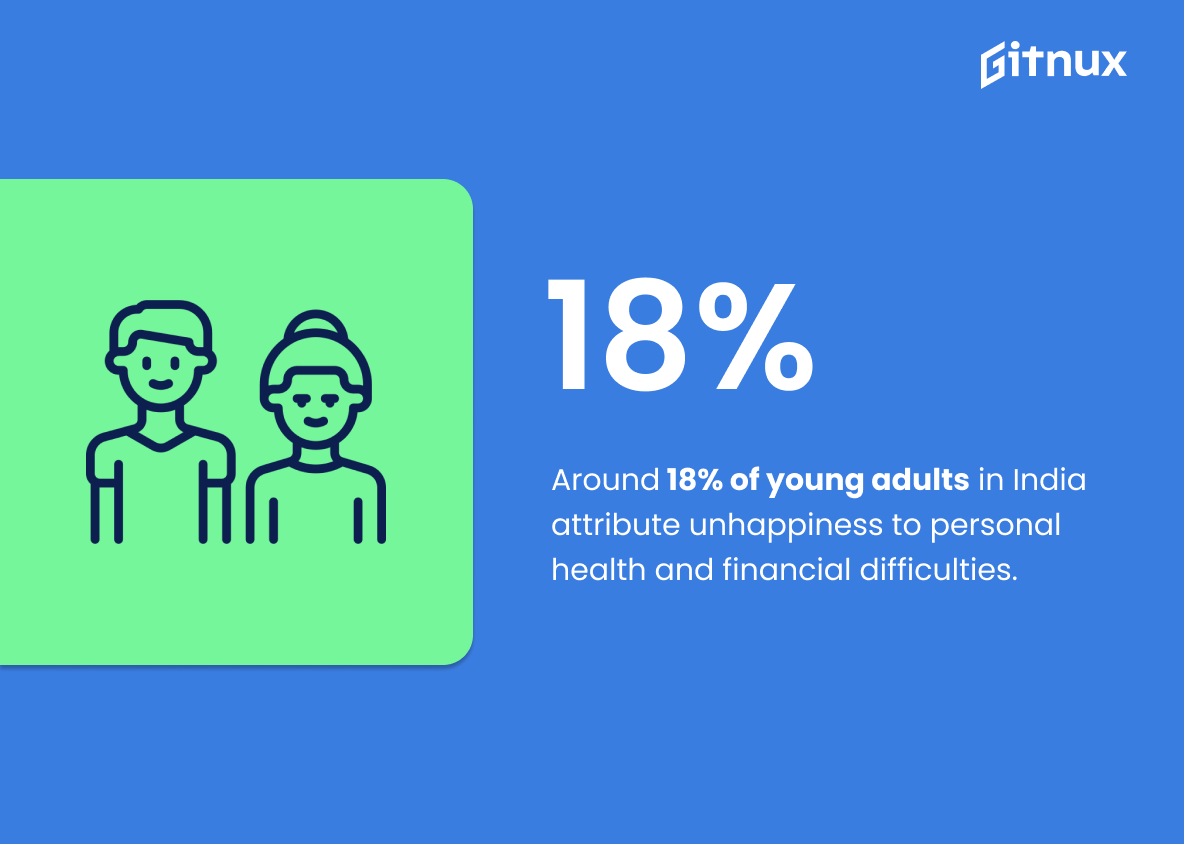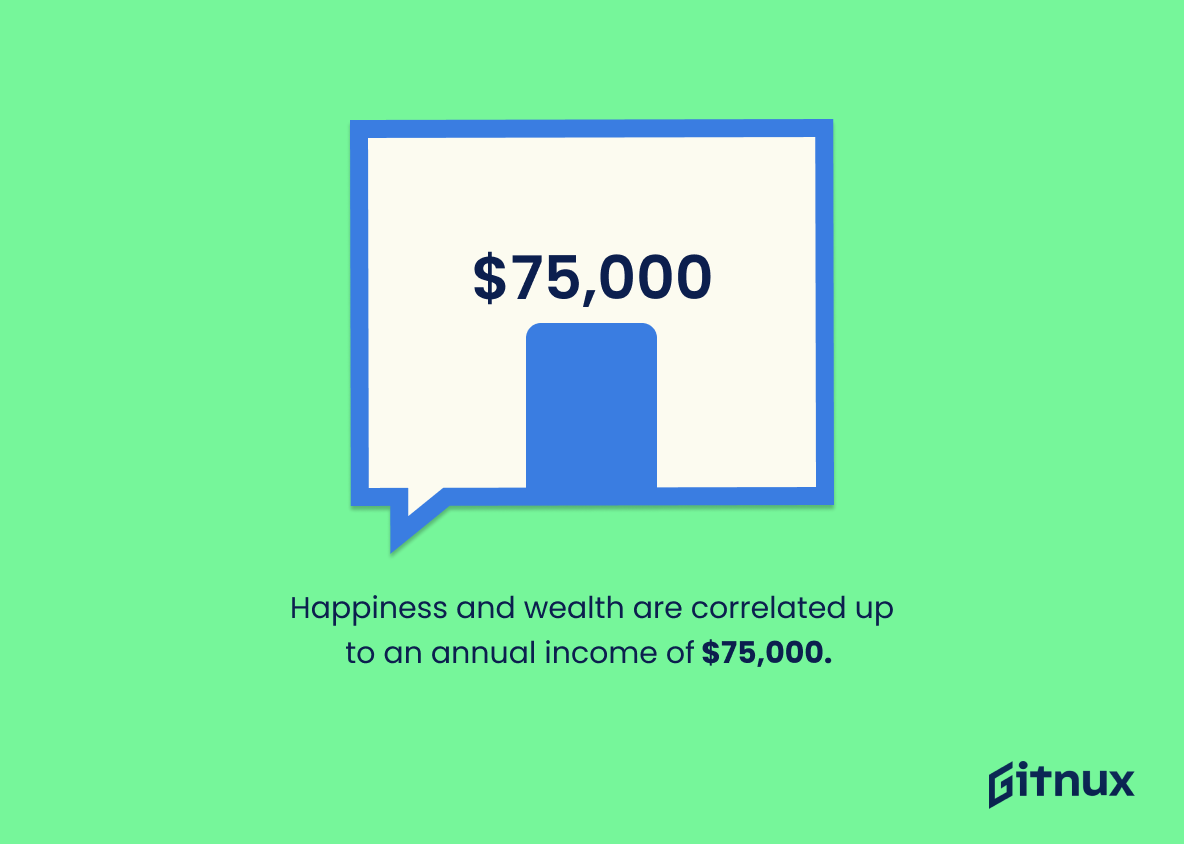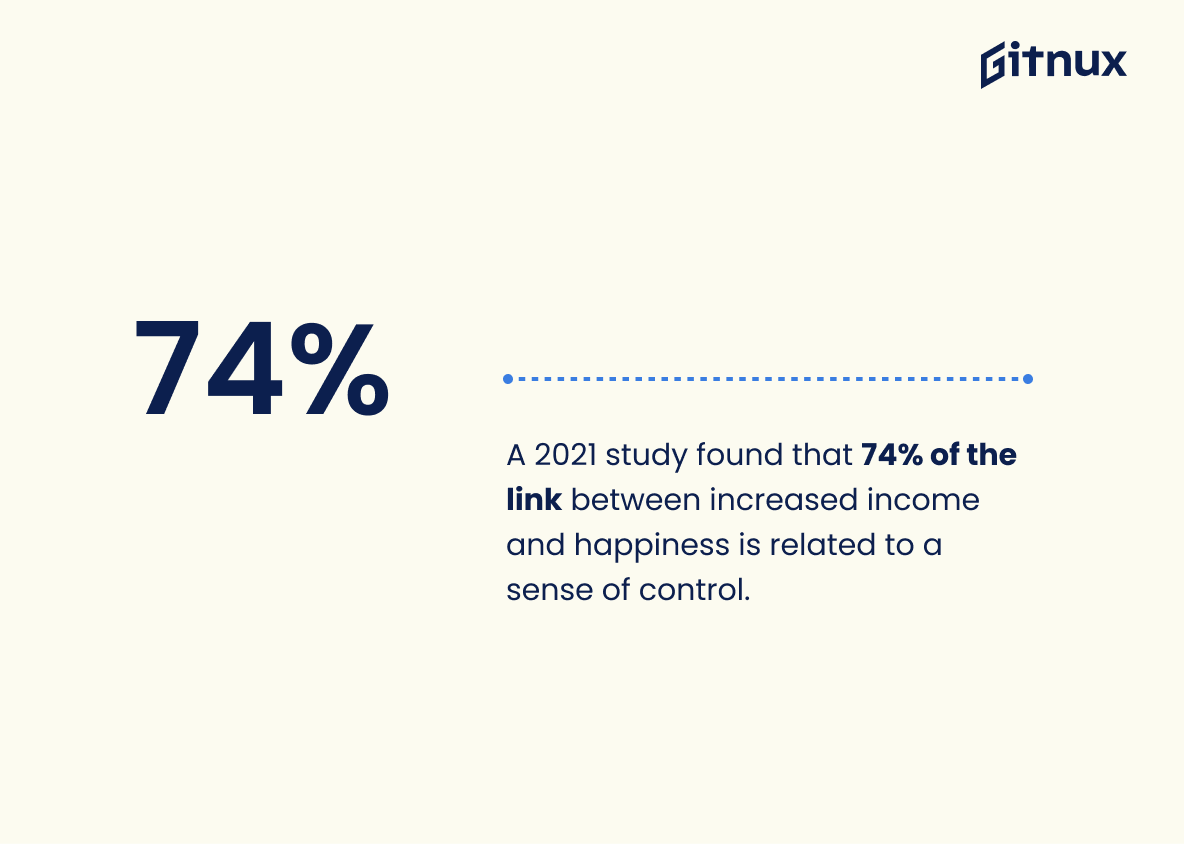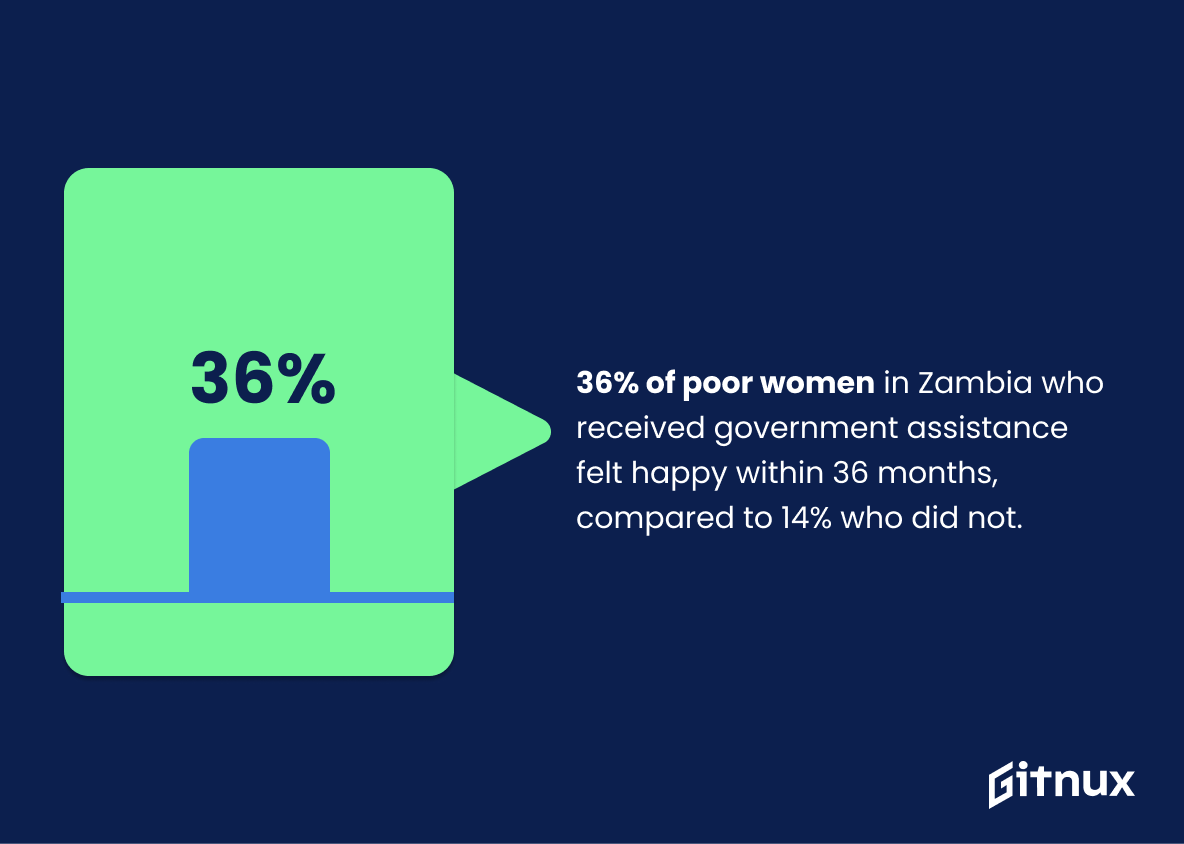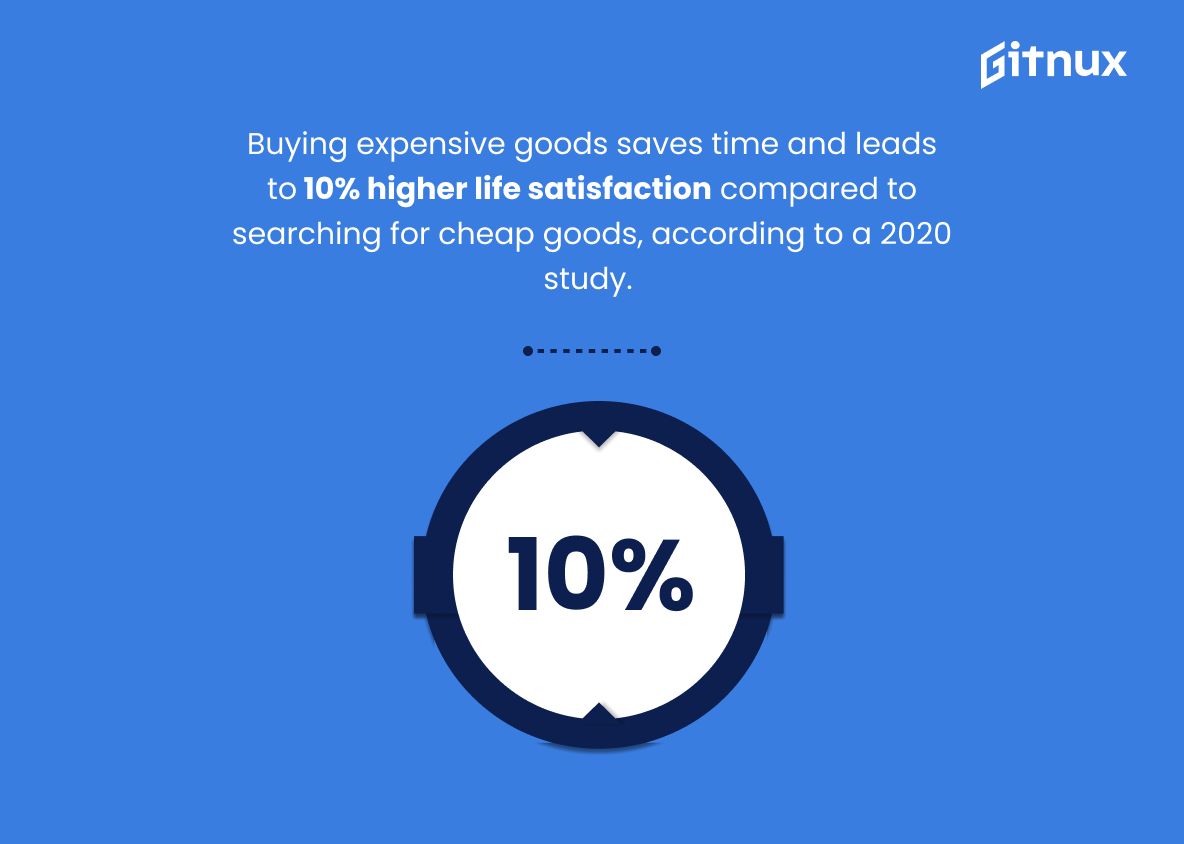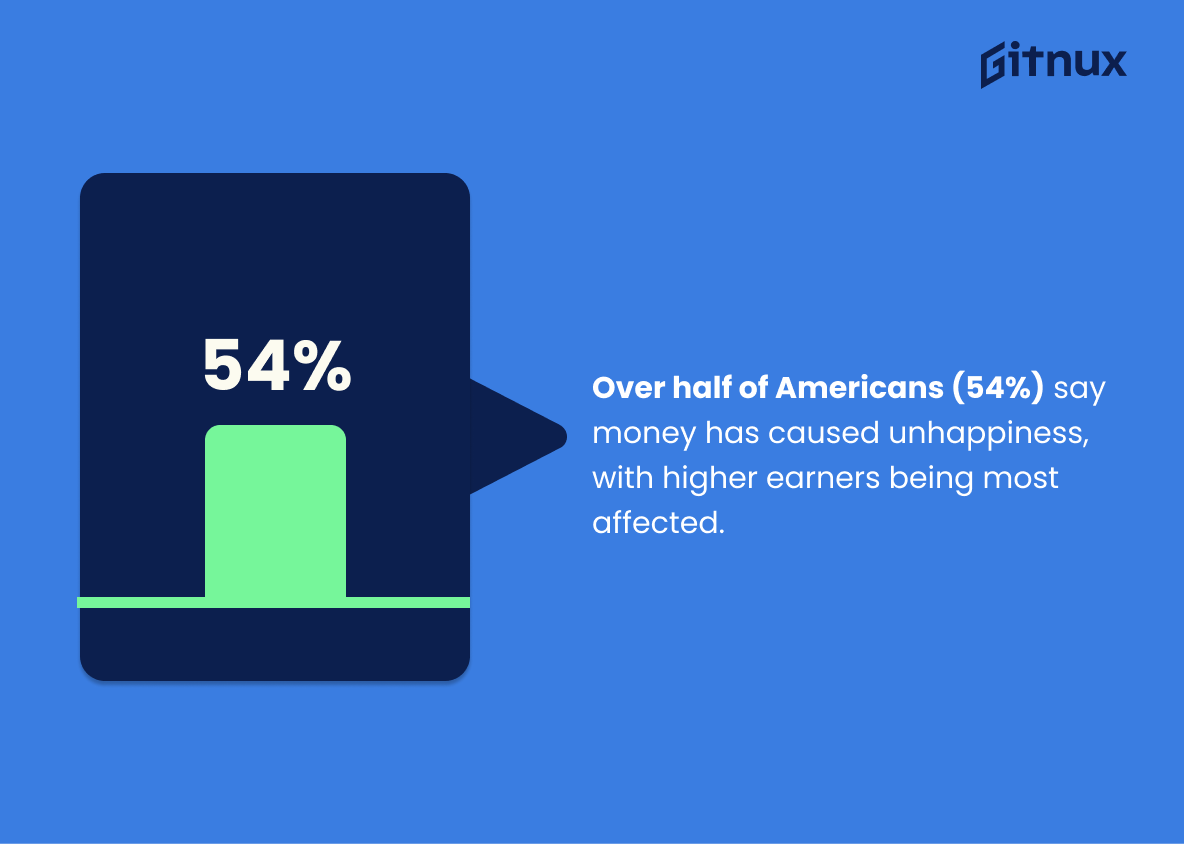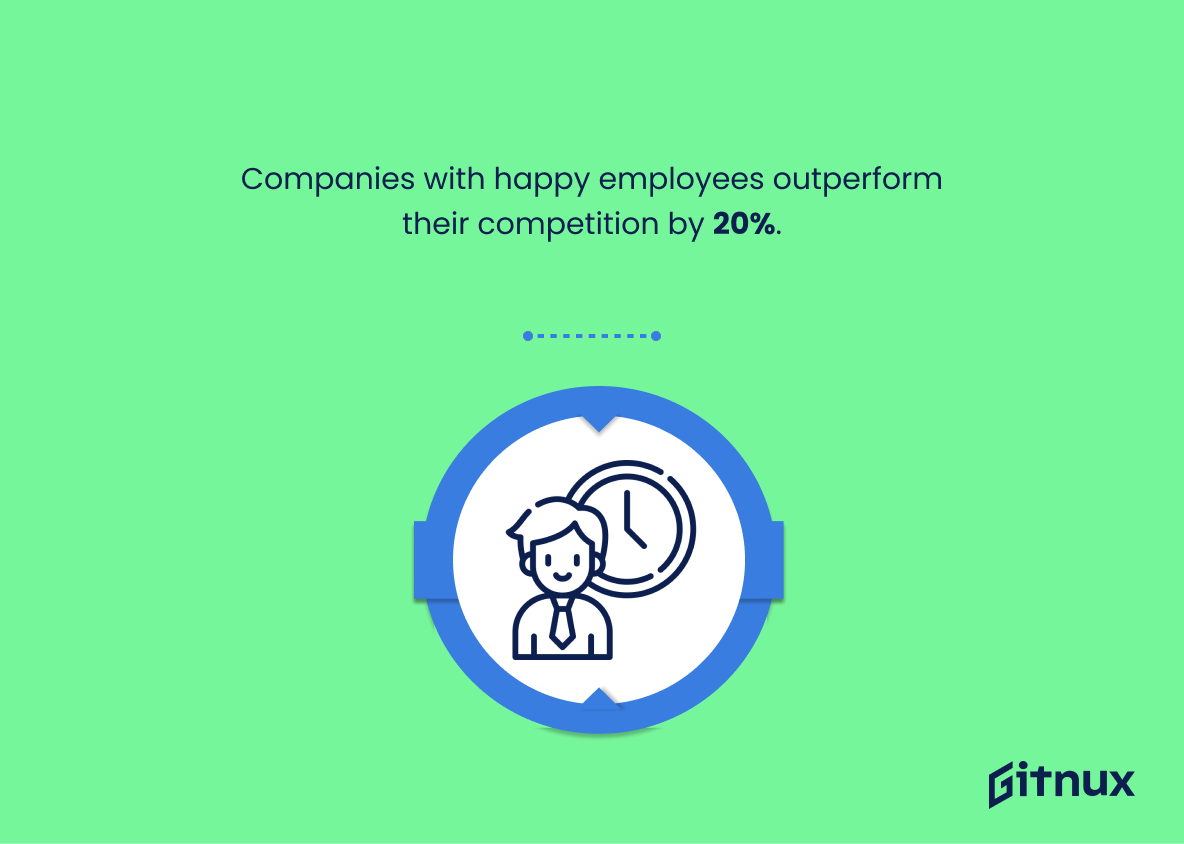Happiness is a complex emotion that can be difficult to quantify. Despite this, researchers have worked hard to develop methods of measuring happiness and have used these to compile a wealth of statistics about the subject.
This blog post will explore the various ways in which happiness is measured, as well as the results of studies conducted on happiness levels around the world. It will also look at the implications of these findings and how they can be used to inform policy decisions and improve the lives of individuals.
Happiness: The Most Important Statistics
People tend to be happy in their late teens and early 20s, but this takes a downward trend till their early 50s. It appears that people have an upward trend after their 50s.
More than half of Americans (54%) say money has actually caused unhappiness.
General Statistics About Happiness
A study analyzing 47,000 people found that women in their 20s are happier than men. However, as they get older and reach their late 40s, men tend to be happier as they are married and financially better off.
The risk of getting high blood pressure among happy people was 9% lower than among unhappy people.
Being happy has also been linked to a 13%-26% lower risk of cardiovascular diseases.
A review of thirty studies also revealed that happiness lowered the risk of death among adults with known heart diseases by 11%.
Based on the World Happiness Report, the Nordic countries are in the top 10 happiest countries, with Finland in the 1st position and Luxembourg in the 10th. The US is in the 18th position and the United Kingdom is in the 13th. The unhappiest countries are Afghanistan, South Sudan and Zimbabwe.
You are in control of your happiness or at least up to 40% of it. Researchers believe a big part of your happiness is beyond your control, a mix of factors, such as genes, other people’s behaviors, and life circumstances.
The average happiness score among pet owners was 59.3%, compared to 36.8% in people without pets.
Statistics About Happiness By Age
Even though no one likes the process of getting old, many studies show that people tend to be happier as they become older. Let’s take a look at some interesting statistics about happiness related to age.
People tend to be happy in their late teens and early 20s, but this takes a downward trend till their early 50s. It appears that people have an upward trend after their 50s.
People in middle age (40 – 50) tend to have a progressively lower level of happiness, especially in high-income countries, mostly because of low levels of job satisfaction and high level of job strain. However, this trend tends to reverse after that decade and grows upwards until around 70.
Life satisfaction begins to decline in the 70s, particularly after age 80, in large part driven by widowhood and health shocks.
In another study, happiness was found to last for a long period. For half of the respondents, their happiest period lasted for two decades or longer, starting in their early 30s, with the four-year period to 34 being their ‘best years’.
According to a study, approximately 18% of personal health and inability to save money were the reasons for unhappiness among young adults in India.
Statistics About Happiness And Money
Can money buy happiness? It’s a question that has been debated for centuries, and the answer is still controversial. While some people believe that having a lot of money can make them happy, others think that money can’t buy happiness. We’ll take a look at some of the latest research on the relationship between money and happiness.
Happiness and wealth correlated up to a $75000 point per year after which the correlation ceases.
Individuals with $500 cash at hand are 15% more satisfied with life than the ones who had no cash at hand.
74% of the evident link between increased income and happiness was associated with a feeling of being in control according to a 2021 study.
Every 10% annual income rise increases an individual’s happiness by a similar percentage irrespective of the amount of money they earn each year.
Within 36 months 36% of poor women in Zambia who received money from the government’s program project felt happy in contrast to 14% who did not.
90% of the women beneficiaries in the program said they were generally feeling happy in contrast to 82% who were non-beneficiaries.
A 2020 study showed that buying expensive goods saves time and leads to 10% higher satisfaction in life in comparison to spending more time looking for cheap goods.
A 2015 study shows that people who earn more money tend to be healthier than those who don’t.
People who struggle financially are 31% more likely to experience stress on any given day.
According to one recent study, 79% of Americans believe they will be happier if they had more money.
69% of Americans say their desire for money influences their daily decisions.
43% of Americans Have Gone Into Debt Trying to Buy Happiness, While 33% Say Money Makes Them Happier Than Love
33% of Americans say money makes them happier than love. Men, millennials and six-figure earners are most likely to agree (all 38%).
All Americans, regardless of age, report that purchasing experiences (like travel or activities) rather than material stuff makes them happy, with 35% of those reporting this. Only 15% of respondents disagreed.
More than half of Americans (54%) say money has actually caused unhappiness. Unhappiness about money is most common among higher earners.
Statistics About Happiness And Work
We spend a great period of our lives working to make ends meet. Others work harder for greater profits in order to achieve more goals they may have. It is popularly believed that people are happier when they work in a healthy work environment and are far more productive when they are happy. There is a quote: “ It wouldn’t be called a job if I enjoyed doing it”. Is this the case? Let’s find out.
Companies with happy employees outperform the competition by 20%.
Happy employees are 12% more productive.
67% of full-time employees with access to free food at work are “extremely” or “very” happy at their current job.
Happy salespeople produce 37% greater sales.
36% of employees would give up $5,000 a year in salary to be happier at work.
Of every 10 employees, 9 of them were ready to sacrifice a percentage of what they earned for the sake of getting greater meaning at work.
Close work friendships boost employee satisfaction by 50%.
Employees who report being happy at work take 10 times fewer sick days than unhappy employees.
Only 42% of employees are happy with the rewards and recognition their company offers.
Unhappy employees don’t feel valued, happy ones do. It was the number 1 reason (69%) that unhappy employees gave for being unhappy and the number 2 reason (57%) that satisfied employees gave for being happy with their job.
Good team spirit is the biggest contributor to happy employees. Enjoying being part of a team with good colleagues was the number 1 reason (73%) given by happy employees. Difficult colleagues were the number 5 reason (38%) given by unhappy employees.
70% of Gen Z and Millennial employees would stay in their jobs for another year if they were given rewards of as little as $ 150 a year.
Statistics About Happiness And Education
Education works wonders in broadening your horizons and perceptions, not to mention the career opportunities that come with a college, thus its higher salary. But to learn one must fail.
The 85% rule says if you never fail, you won’t be challenged to continue and if you fail too frequently, you will be demotivated. The sweet spot for motivation and learning is an 85% success and 15% failure rate. Fail 15% of the time and you will keep coming back for more.
94% of people with a bachelor’s degree or more reported feeling happy or very happy with their lives overall, while 89% of high school grads said the same.
For university graduates, it would appear that their university days were their glory days, with the graduates’ high levels of happiness declining upon completion of their qualification.
College education has a stronger positive effect on happiness in males than in females and a stronger positive effect on happiness in urban residents than in rural residents.
In Denmark, the percentage of university students who reported feeling lonely grew significantly during the COVID-19 pandemic. Only 8% of respondents reported feeling lonely to a major or very large amount in October 2020; by March 2021, this percentage had risen to 27%. In addition, less than 50% of respondents indicated they felt lonely in 2021, down from three-quarters who said they did not feel lonely at all or only felt it infrequently in 2020.
Conclusion
Happiness is an important part of life and it is essential to understand the factors that contribute to it. The statistics in this blog post have shown that there are many different components that can affect a person’s level of happiness, from income and education to relationships and health.
It is clear that there is no single formula for achieving happiness, and it is important to recognize that different people have different needs and preferences. Ultimately, it is up to each individual to find the right balance of factors that lead to a satisfactory lifestyle.
References
Weforum: “This chart predicts the age at which you’ll be happiest”, cited February 2023 (Source)
Weforum: “At what age does happiness peak?”, cited February 2023 (Source)
Statista: “Sources of unhappiness among young adults in India 2015.”, cited February 2023 (Source)
Brookings: “Happiness and aging in the US: Why it is different from other places and why it matters”, cited February 2023 (Source)
Stylist: “What’s the happiest age? Why your 30s are full of joy, not crisis, according to a study”, cited February 2023 (Source)
Inverse: “The Psychological Reason Men and Women Experience Happiness Differently”, cited February 2023 (Source)
CBS news: “Who’s Happier, Women Or Men?”, cited February 2023 (Source)
BusinessDit: “29 Eye-Opening Can Money Buy Happiness Statistics in 2022”, cited February 2023 (Source)
Forbes: “79% Of Americans Believe More Money Will Make Them Happier. Here’s Why They’re Wrong”, cited February 2023 (Source)
LendingTree: “ 43% of Americans Have Gone Into Debt Trying to Buy Happiness, While 33% Say Money Makes Them Happier Than Love”, cited February 2023 (Source)
CompareCamp: “32 Happiness Statistics: 2020/2021 Data, Trends & Facts”, cited February 2023 (Source)
SnackNation: “11 Shocking Employee Happiness Statistics For 2023 That Will Blow Your Mind”, cited February 2023 (Source)
SuperScholar: “The 10 Happiest and 10 Unhappiest Professions”, cited February 2023 (Source)
AcuityTraining: “Employee Happiness Statistics & Facts – 2022 Research”, cited February 2023 (Source)
Efecto: “Recent and Important Statistics on Employee Happiness”, cited February 2023 (Source)
Cnbcmakeit: “From the best major to finding purpose in life — how going to college affects your happiness”, cited February 2023 (Source)
Forbes: “Learning Is A Sure Path To Happiness: Science Proves It”, cited February 2023 (Source)
NCVER: “Education and happiness in the school-to-work transition”, cited February 2023 (Source)
Frontiers: “Influence of college education on happiness: A quasi-experimental study based on higher education expansion in China”, cited February 2023 (Source)
Earth: “Pet owners are happier than people who don’t have pets”, cited February 2023 (Source)
Statista: “Student loneliness in higher education in Denmark 2020-2021”, cited February 2023 (Source)

